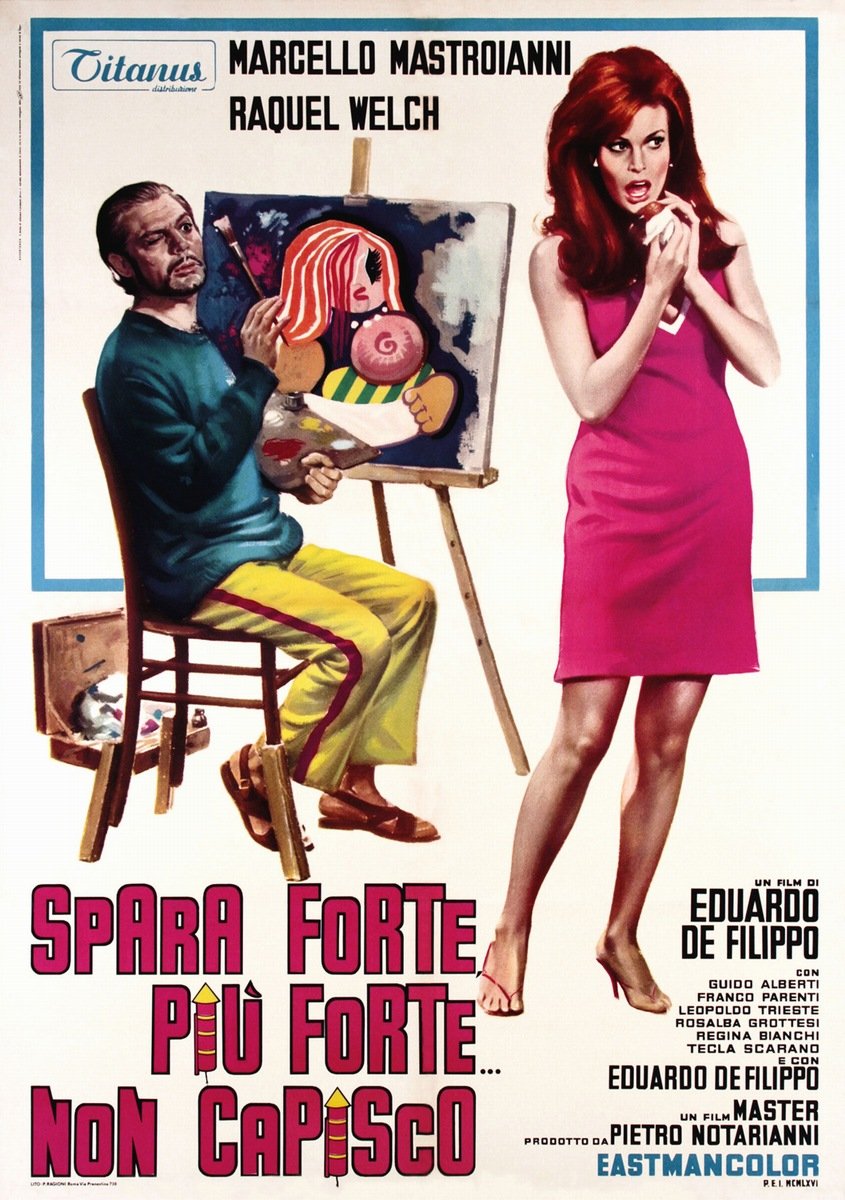An unexpected and surprising demonstration of the genius of Eduardo De Filippo
Considered by many to be a precursor to pop and psychedelic cinema
One of Marcello Mastroianni’s most unique and unjustly forgotten performances
Upon its release it was greeted by some with annoyance, by others with indifference, however today it is considered unique and unmissable, an unexpected gem of sometimes psychedelic madness. It is the umpteenth demonstration of the genius of Eduardo De Filippo. It is also, as noted by critic Emiliano Morreale, “…one of Marcello Mastroianni’s most unique and forgotten films. Eduardo, usually very attentive in adapting his works, here takes every liberty with his comic play Le voci di dentro: he wants cinema to succeed, and the cinema he chooses is visually and musically bursting at the seams, in line with Italian pop culture of the 1960s that stretches from Fellini to Mario Bava, from Vittorio Caprioli to Alberto Lattuada to Elio Petri’s La decima vittima. Indeed, the film also stars an unlikely Marcello Mastroianni playing a vaguely pop sculptor and painter. It is also highly enjoyable for some of its more bizarre aspects, such as Raquel Welch dubbed in Piedmontese, a musical score by Nino Rota that samples lines from the song Funiculì Funiculà and La dolce vita, and the scenography and costumes of Enrico Job and Gianni Polidori.”
Neapolitan sculptor Alberto lives with an elderly uncle who, in protest against the cruelty of the world, only communicates via fireworks. Following an overly realistic dream, the artist falsely accuses his neighbours of murdering a member of the organised crime group the Camorra. By the time he withdraws the accusation, it’s too late. Confusion reigns supreme, until the uncle destroys everything with a pyrotechnic bonfire. Alberto disappears with the girl he loves.
An unexpected and surprising demonstration of the genius of Eduardo De Filippo
Considered by many to be a precursor to pop and psychedelic cinema
One of Marcello Mastroianni’s most unique and unjustly forgotten performances
Upon its release it was greeted by some with annoyance, by others with indifference, however today it is considered unique and unmissable, an unexpected gem of sometimes psychedelic madness. It is the umpteenth demonstration of the genius of Eduardo De Filippo. It is also, as noted by critic Emiliano Morreale, “…one of Marcello Mastroianni’s most unique and forgotten films. Eduardo, usually very attentive in adapting his works, here takes every liberty with his comic play Le voci di dentro: he wants cinema to succeed, and the cinema he chooses is visually and musically bursting at the seams, in line with Italian pop culture of the 1960s that stretches from Fellini to Mario Bava, from Vittorio Caprioli to Alberto Lattuada to Elio Petri’s La decima vittima. Indeed, the film also stars an unlikely Marcello Mastroianni playing a vaguely pop sculptor and painter. It is also highly enjoyable for some of its more bizarre aspects, such as Raquel Welch dubbed in Piedmontese, a musical score by Nino Rota that samples lines from the song Funiculì Funiculà and La dolce vita, and the scenography and costumes of Enrico Job and Gianni Polidori.”
Neapolitan sculptor Alberto lives with an elderly uncle who, in protest against the cruelty of the world, only communicates via fireworks. Following an overly realistic dream, the artist falsely accuses his neighbours of murdering a member of the organised crime group the Camorra. By the time he withdraws the accusation, it’s too late. Confusion reigns supreme, until the uncle destroys everything with a pyrotechnic bonfire. Alberto disappears with the girl he loves.
